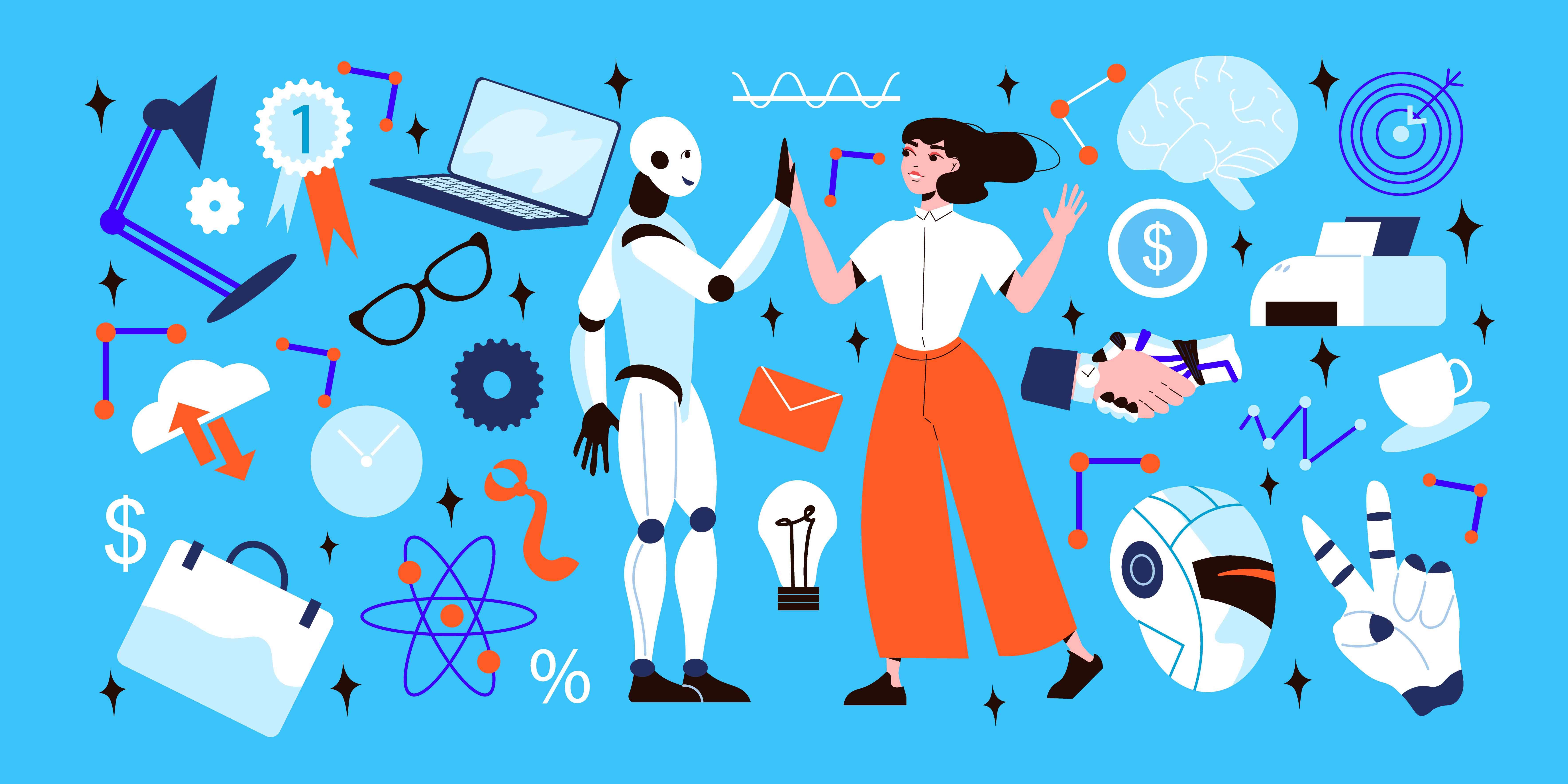Introduction:
Artificial Intelligence (AI) has emerged as a transformative force across various industries, revolutionizing the way businesses operate. In particular, the integration of AI into business operations has resulted in increased efficiency, cost savings, and innovative approaches to problem-solving.
In this blog, we’ll look into the ways AI is transforming business operations, exploring real-world examples that showcase its profound impact.
Enhanced Automation:
AI-powered automation is streamlining repetitive tasks, freeing up valuable human resources for more complex and strategic activities. For instance, robotic process automation (RPA) is being widely adopted to automate mundane tasks such as data entry, invoicing, and customer support. This not only reduces human errors but also accelerates task completion, leading to increased productivity.
Example: UiPath, a leading RPA platform, has empowered businesses to automate routine tasks, allowing employees to focus on higher-value tasks.
Data-Driven Decision Making:
AI enables businesses to harness the power of big data for informed decision-making. Machine learning algorithms analyze vast datasets to extract valuable insights, helping organizations make strategic decisions based on trends and patterns. This data-driven approach enhances accuracy and mitigates risks.
Example: Netflix uses AI algorithms to analyze user viewing patterns and preferences, providing personalized recommendations that contribute significantly to user engagement and retention.
Customer Relationship Management (CRM):
AI plays a pivotal role in improving customer interactions. Chatbots and virtual assistants powered by natural language processing (NLP) enhance customer service by providing instant responses to queries. This not only improves customer satisfaction but also reduces the workload on support teams.

Supply Chain Optimization:
AI is revolutionizing supply chain management by predicting demand, optimizing inventory levels, and enhancing logistics. Machine learning algorithms analyze historical data to forecast demand accurately, minimizing excess inventory and reducing costs associated with stockouts.
Example: Amazon utilizes AI to optimize its supply chain, predicting customer demand and ensuring products are strategically located in fulfillment centers for efficient and timely delivery.
Fraud Detection and Security:
AI-powered algorithms are instrumental in detecting anomalies and potential security threats. In the financial sector, for instance, machine learning models analyze transaction patterns to identify and prevent fraudulent activities, safeguarding businesses and customers alike.
Example: PayPal employs AI to analyze transaction data and detect unusual patterns indicative of fraudulent activities, providing an additional layer of security for its users.

Why React Native is the Right Choice for Your Next App
The Collaboration of Virtual Reality and Artificial Intelligence:
Virtual Reality (VR) is another frontier where the convergence with Artificial Intelligence is reshaping business operations. The combination of AI and VR opens up new dimensions for immersive experiences and advanced simulations. In training scenarios, employees can engage in lifelike simulations powered by AI algorithms that respond dynamically to user actions, enhancing the learning process.
AI-driven algorithms can analyze user interactions within virtual environments, adapting the experience in real-time based on individual learning patterns. This personalized approach not only improves the effectiveness of training but also provides valuable insights into employee performance and areas for improvement.
Example: Walmart employs VR simulations powered by AI to train employees in various scenarios, such as dealing with holiday rushes or emergency situations. The AI component ensures that the simulations adapt to each employee’s learning pace and style, resulting in more effective training outcomes.
Moreover, the collaboration of AI and VR is transforming customer experiences. Virtual shopping experiences, powered by AI algorithms that understand customer preferences, offer a personalized and interactive way for consumers to explore products. This not only enhances user engagement but also provides businesses with valuable data on consumer behavior.
Example: IKEA utilizes AI-driven VR experiences that allow customers to virtually place furniture in their homes before making a purchase. The AI component understands spatial constraints and style preferences, creating a highly personalized and convenient shopping experience.
In conclusion, the integration of Virtual Reality and Artificial Intelligence represents a powerful alliance that goes beyond traditional boundaries, providing businesses with innovative tools to enhance training, customer engagement, and overall operational efficiency. As these technologies continue to advance, the collaboration between AI and VR is poised to play an increasingly integral role in shaping the future of business operations.
Conclusion
Artificial Intelligence is undeniably transforming business operations, offering unprecedented opportunities for efficiency, innovation, and growth. As businesses continue to embrace AI technologies, the landscape of operations will evolve, paving the way for a more intelligent and adaptive business environment.
The examples provided are just a glimpse into the vast potential of AI, and as the technology advances, its impact on business operations is only set to grow.




